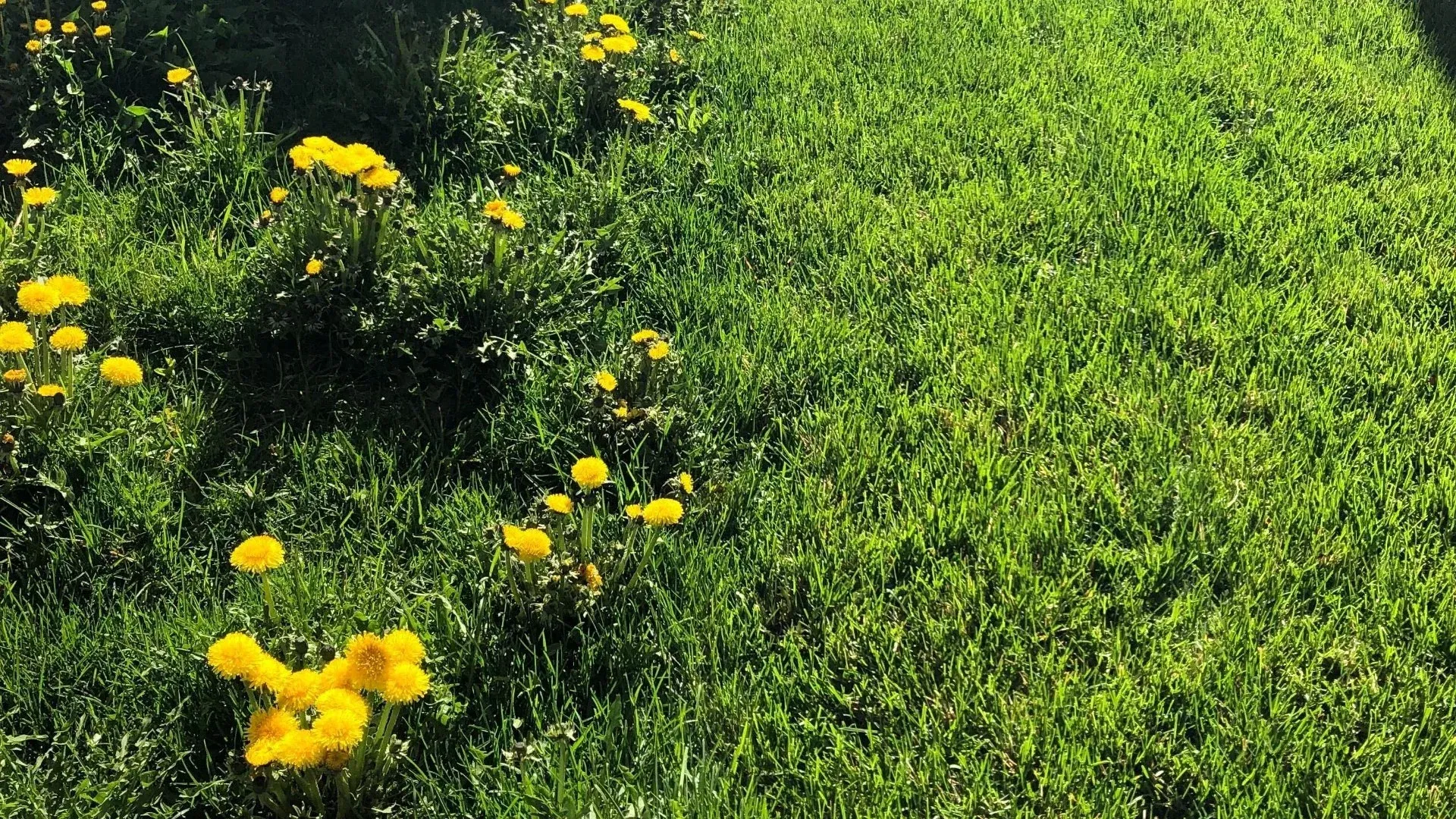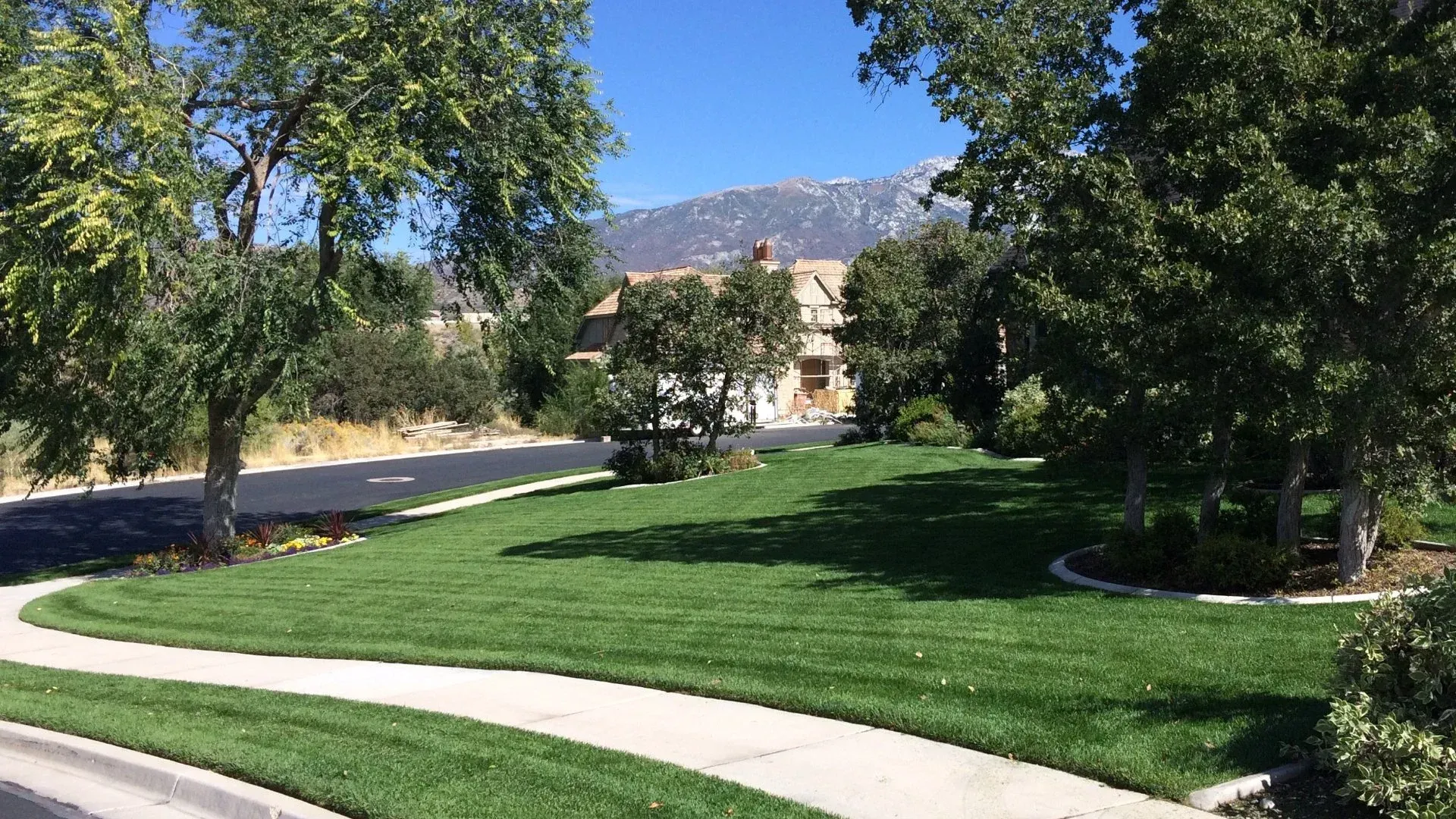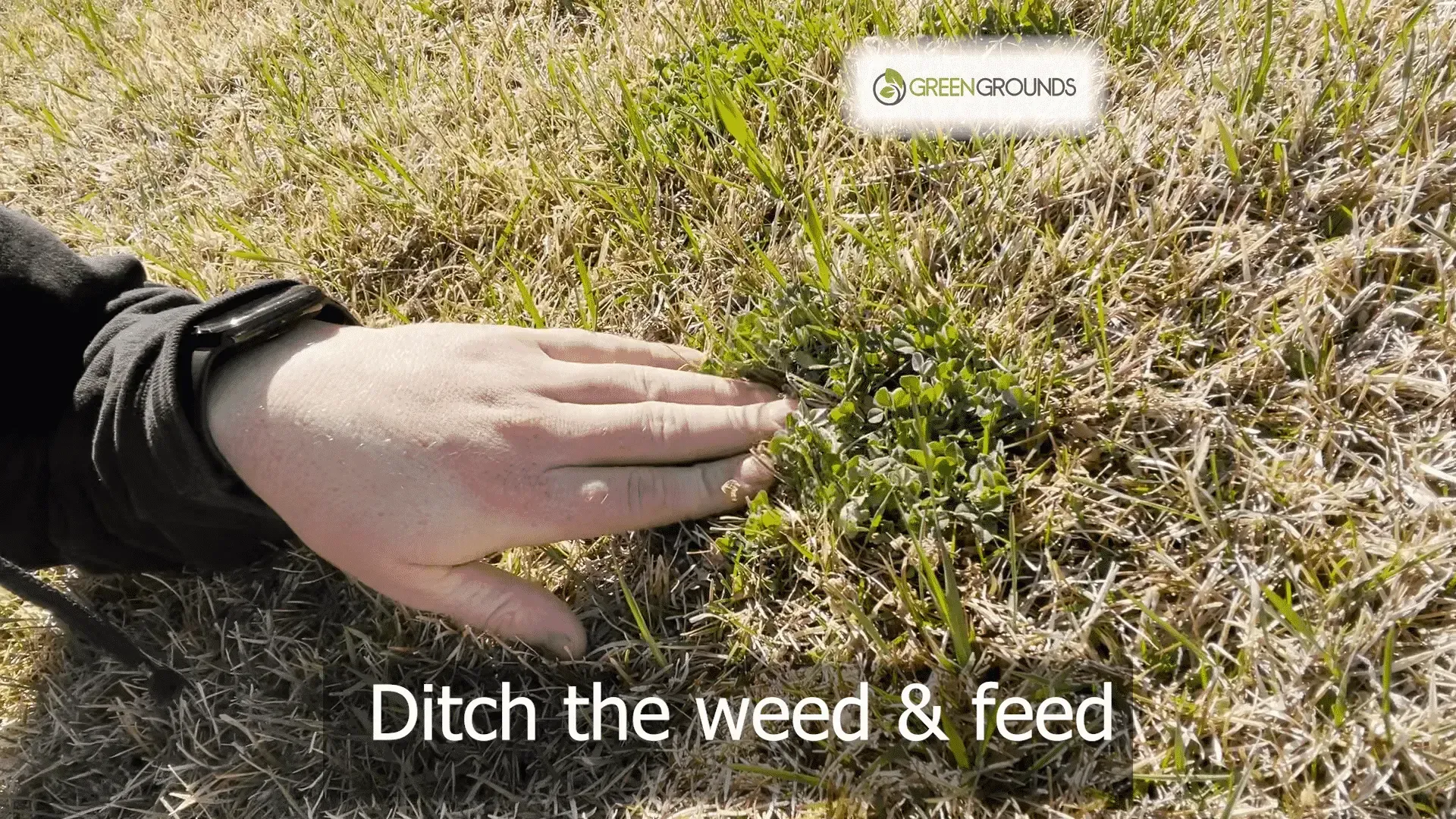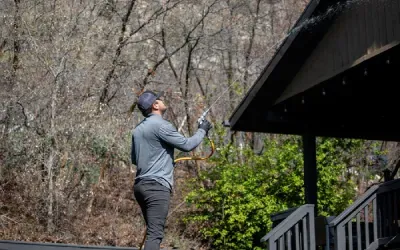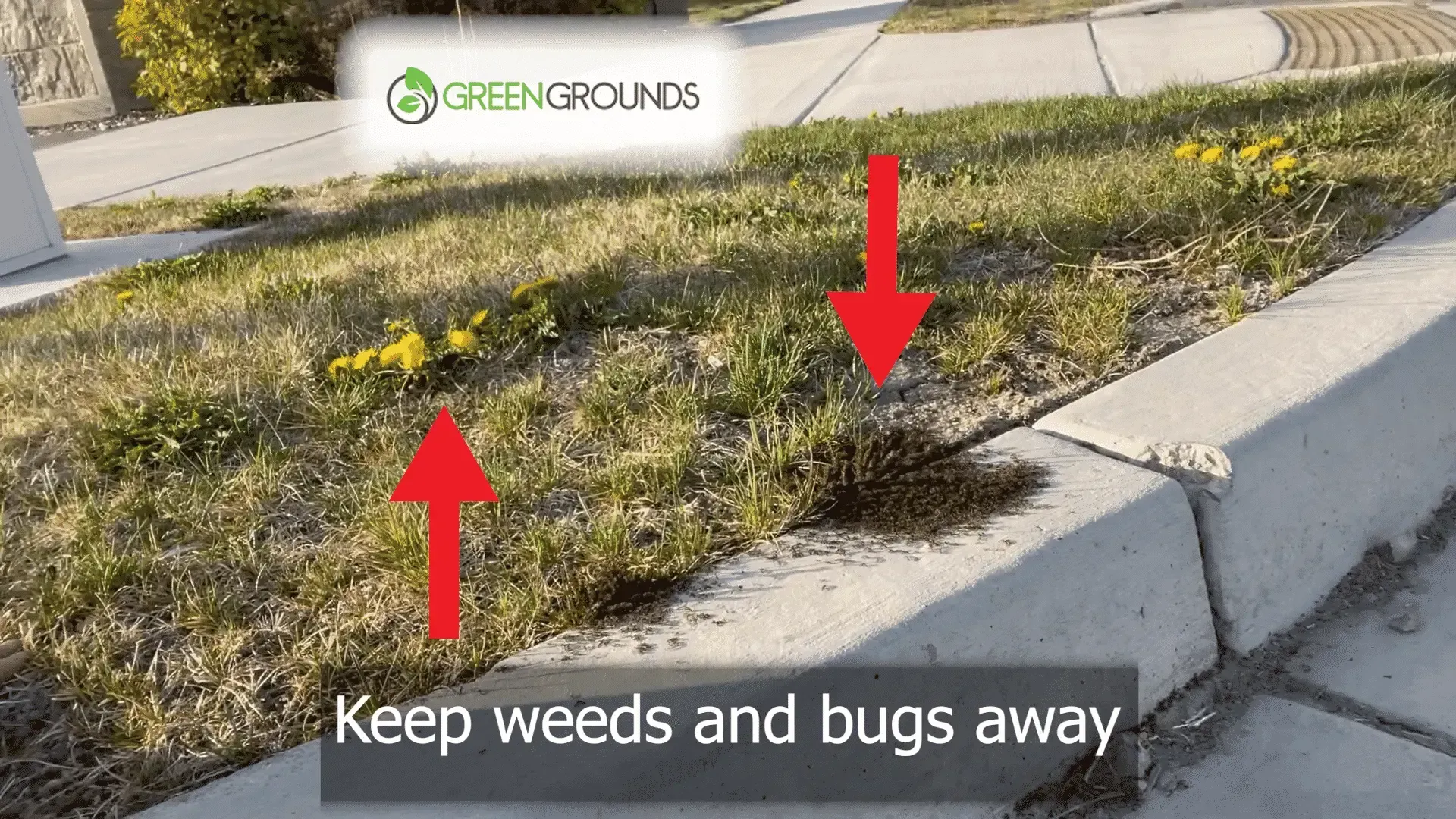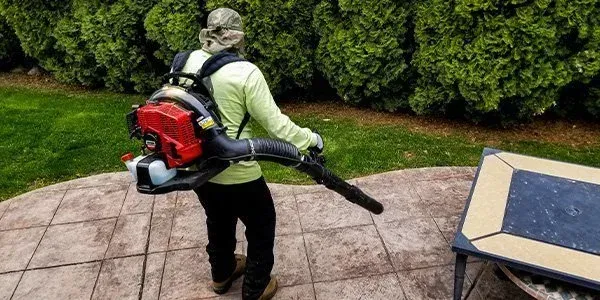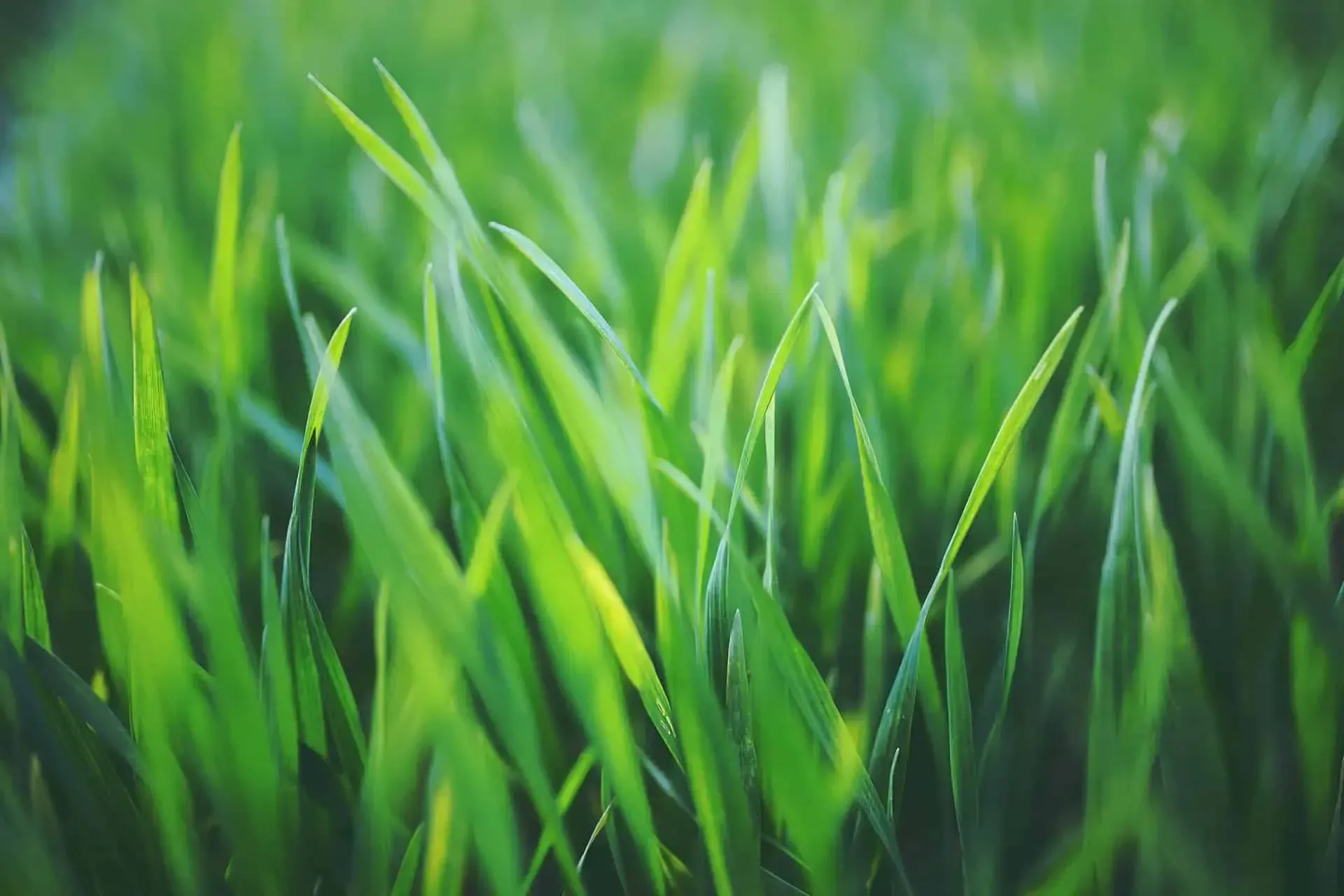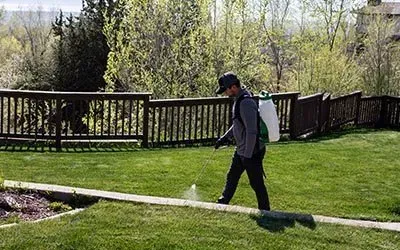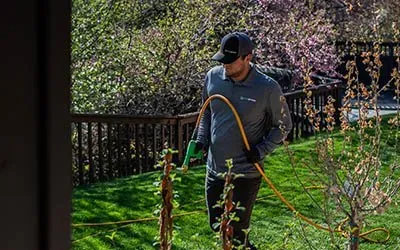Got Crab Grass?
– Hey guys, this is Taylor again here. So I wanted to talk about something we found as we were doing lawn care in Alpine. So right here behind me you have this thin patch of grass here. And you can see this is right where you see all of the weeds popping up through. So obviously having a fertilization program and staying on top of your grass and the weeds is a great thing. But one of the things that people overlook, one of the best weed control solutions is to have So there’s a few real ways to address this. So we can come by and do our fertilization weed control program, it’s gonna go ahead and kill all of those weeds, but they’re gonna continue to keep popping up until we address this issue. So there’s a few things that could have caused this, either a watering issue, that you’re not getting good coverage on your lawn and this part has died off and that’s the cause.
So a good sprinkler tune-up is a good place to start. And then second, there’s a possibility that it was some sort of insect issue. So if it was an insect issue and it was last year you’re not gonna have to worry about that. All those bugs will have died through the winter. But, moving forward, this is something that needs to be addressed. The fastest solution, I know it’s not the best and the funnest, but is probably gonna be to re-sod this area. So keep that in mind if you have any trouble areas like that. I guess that’s a good place to start. If you have any more Highland lawn care questions, give us a cal Thanks, bye.a nice thick green lawn. So, as you can see, here it’s not and that’s why you’re having issues. So there’s a few real ways to address this. So we can come by and do our fertilization weed control program, it’s gonna go ahead and kill all of those weeds, but they’re gonna continue to keep popping up until we address this issue. So there’s a few things that could have caused this, either a watering issue, that you’re not getting good coverage on your lawn and this part has died off and that’s the cause.
So a good sprinkler tune-up is a good place to start. And then second, there’s a possibility that it was some sort of insect issue. So if it was an insect issue and it was last year you’re not gonna have to worry about that. All those bugs will have died through the winter. But, moving forward, this is something that needs to be addressed. The fastest solution, I know it’s not the best and the funnest, but is probably gonna be to re-sod this area. So keep that in mind if you have any trouble areas like that. I guess that’s a good place to start. If you have any more Highland lawn care questions, give us a call. Thanks, bye.
